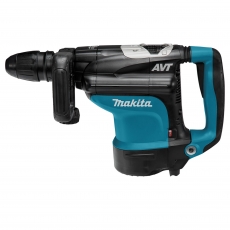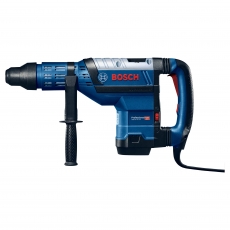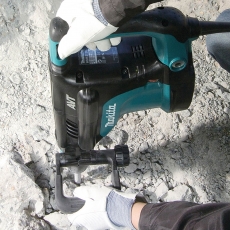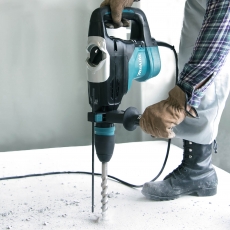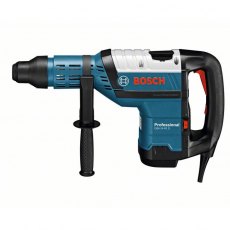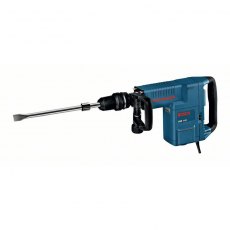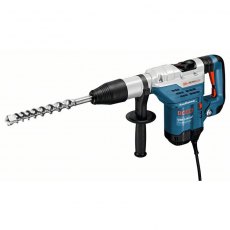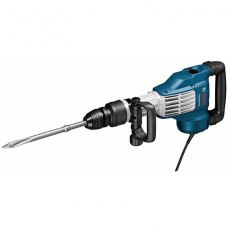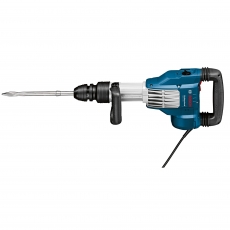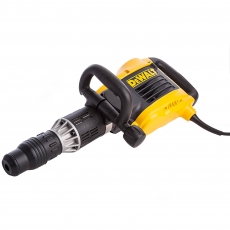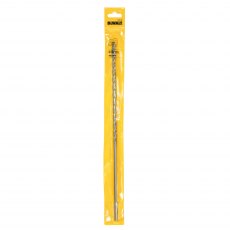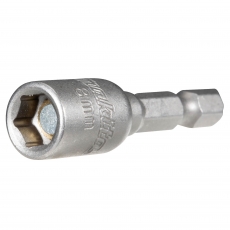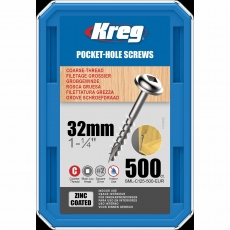BOSCH GSH11E 110v SDS-max Demolition Hammer
BOSCH GSH11E 110v SDS-max Demolition Hammer
 Hurry, low stock
Hurry, low stockWhat’s Included
- Auxilliary Handle
- Grease Tube
- Machine Cloth
- SDS-Max Flat Chisel
- Carrying Case
Please Note
This is a 110v machine and must be used in conjunction with a power tool transformer.
Product Overview
Part No: 0611316741(BOSP0611316741)
Features & Benefits
- Extreme impact force of 16.8 joules for high material removal rate
- Low-vibration in operation and no-load
- Low feed pressure, for fatigue-free working
- Wide sliding switch for convenient switching on and off
- Variable chisel fitting in 12 positions
- Auxiliary handle can be adjusted and rotated 360°
- SDS-max toolholder with integrated dust protection
- Large-volume carrying case
- Service display indicates an impending carbon brush change
Technical Specification
- Rated Power Input: 1500 W
- Max. Impact Energy: 16.8 J
- Impact Rate at Rated Speed: 900 - 1,890 bpm
- Weight: 10.1 kg
- Length: 570 mm
- Height: 270 mm
- Tool Holder: SDS-max
- Vibration level (chiselling): 18.5 m/s²
FAQs
SDS Max Hammers are tools which pack a lot of punch. They’re so strong that many are designed for demolition. Because their primary role is as a hammer drill, the impact rate – measured in either impacts per minute (ipm) or blows per minute (bpm) is definitely an important characteristic to consider. You should also check the maximum drilling capacity, which determines how far the tool will go into the material you’re working with.
The main differences are in the kind of drill bits they use and the amount of power they can bring to a task. Slotted Drive System drills use bits with slots or indentations and a pair of sprung ball bearings at the end of the shaft, which ensure a snug fit into the chuck. The fact that SDS drills usually have faster rotations and provide more blows per minute sets them apart from a ‘traditional’ hammer drill and makes them particularly suitable for tougher drilling tasks, such as driving into concrete.
One significant difference between these kinds of tools is the size of the shank. SDS Plus bits typically have a 10mm shank, while SDS Max is 18mm. This means that an SDS Max tool can use SDS Plus drill bits with an adaptor, but SDS Max bits aren’t ‘backwards’ compatible. The other main difference is that an SDS Max drill has even more power than an SDS Plus tool and is designed for working on tougher jobs than you might use the SDS Plus machine for.
That depends entirely on the power available on site. The ToolStore UK range includes both 110v and 240v options.
Delivery & Returns
Warranty
Related Products
VAT (£727.89 ex VAT)
VAT (£706.72 ex VAT)
VAT (£660.39 ex VAT)
VAT (£475.82 ex VAT)
VAT (£910.84 ex VAT)
VAT (£664.00 ex VAT)
VAT (£468.03 ex VAT)
VAT (£536.20 ex VAT)
VAT (£613.51 ex VAT)
VAT (£359.98 ex VAT)
VAT (£421.27 ex VAT)
VAT (£393.58 ex VAT)
VAT (£452.90 ex VAT)
VAT (£44.49 ex VAT)
VAT (£602.11 ex VAT)







